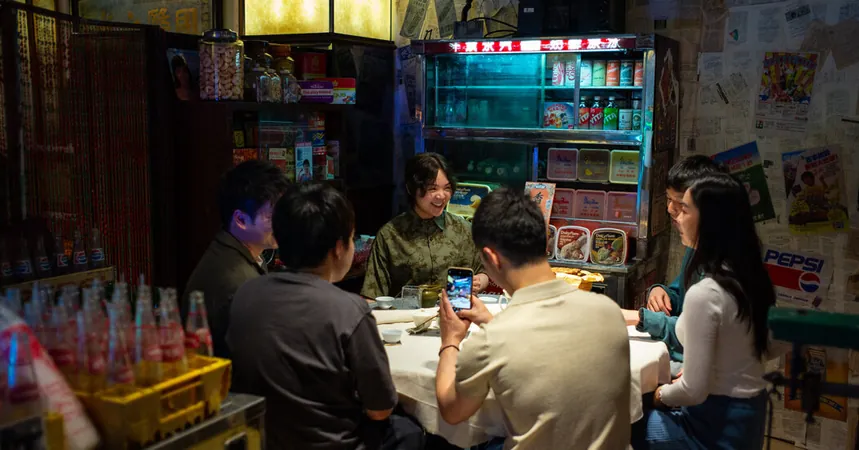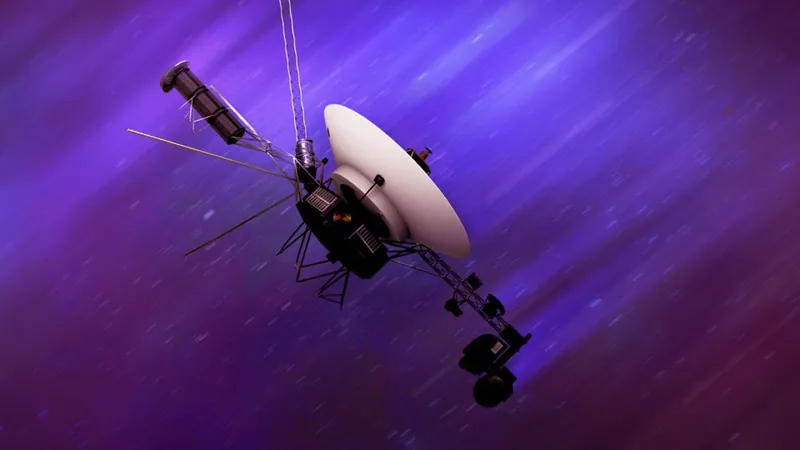
A Nostalgic Journey: Bruce Lee's Rooftop and the Revival of Old Hong Kong
2025-04-25
Author: Ming
In the vibrant 1950s and 60s, the Lung Wah Hotel in Hong Kong stood as a tranquil oasis, a converted Spanish revival villa nestled near a serene cove and surrounded by lush parks.
Guests would meander up winding stairs adorned with red lanterns, arriving at a sprawling Chinese-style garden. Summer weekends were filled with laughter as families gathered for mahjong under a charming pavilion while children frolicked in the sandboxes and swings. Among its illustrious patrons, Bruce Lee famously honed his martial arts skills on the hotel’s rooftop.
But like many gems of the past, the Lung Wah Hotel faced decline. New fire safety regulations forced it to cease room rentals, while the once serene rice fields transformed into busy residential areas. Despite the celebrated restaurant continuing to serve its famous roast pigeon, it struggled for patrons, especially after losing its expansive parking lot to a police station in the 1970s.
Curator John Wu, a local graphic designer and collector, envisioned breathing new life into the hotel, transforming it into a living museum that pays homage to its rich history. With a keen eye for detail, he aims to evoke nostalgia among older visitors while igniting curiosity in the youth. ‘Feel the sturdiness of the wood,’ he urges, as he guides groups through the historic site.
The 1980s are often heralded as a glorious era for Hong Kong's cultural scene, characterized by a boom in local cinema, vibrant television shows, and the rise of Cantopop. However, the influx of entertainment imports from China, Korea, Japan, and Taiwan diluted this cultural heritage over the years.
This nostalgia resonates even deeper against the backdrop of recent political unrest and efforts by the Chinese government to reshape Hong Kong's identity post-protests. Many residents yearn for the past, seeking solace in memories of a vibrant cultural landscape, as noted by interior designer Connie Li, who expressed a desire to escape rapid changes and rediscover her roots.
In response to this resurgence of interest in the city’s cinematic history, the tourism board hosted an exhibition linked to the hit film 'Twilight of the Warriors: Walled In,' immersing guests in the 1980s aesthetic through interactive setups like a barbershop and tea stall.
Wu, who has shifted his focus to highlighting Hong Kong's unique design history, collaborates with fellow enthusiasts Pan Tse and Tiger Ng. Together, they helped elderly residents empty an outdated housing complex, salvaging cherished furniture and mementos with dreams of establishing a mini-museum.
In a serendipitous twist of fate, hotel owner Mary Chung sought their expertise to sort through decades of archived equipment and books. The Lung Wah Hotel, built in the 1930s, had transitioned from a family vacation home to a vibrant hotel filled with life, hosting poetry readings, live music, and even a recording studio for celebrated Cantonese opera singers.
However, the hotel closed its doors in 1985 as urban development enveloped the area, losing its tranquil charm. Although the restaurant persevered, maintaining a loyal local clientele amidst a backdrop of nostalgia-laden decor and memorable movie star photographs, the Covid-19 pandemic threatened its existence.
Today, as patrons seek the warmth of old memories, the Lung Wah stands not just as a building, but as a testament to Hong Kong’s perseverance through time, culture, and change.




 Brasil (PT)
Brasil (PT)
 Canada (EN)
Canada (EN)
 Chile (ES)
Chile (ES)
 Česko (CS)
Česko (CS)
 대한민국 (KO)
대한민국 (KO)
 España (ES)
España (ES)
 France (FR)
France (FR)
 Hong Kong (EN)
Hong Kong (EN)
 Italia (IT)
Italia (IT)
 日本 (JA)
日本 (JA)
 Magyarország (HU)
Magyarország (HU)
 Norge (NO)
Norge (NO)
 Polska (PL)
Polska (PL)
 Schweiz (DE)
Schweiz (DE)
 Singapore (EN)
Singapore (EN)
 Sverige (SV)
Sverige (SV)
 Suomi (FI)
Suomi (FI)
 Türkiye (TR)
Türkiye (TR)
 الإمارات العربية المتحدة (AR)
الإمارات العربية المتحدة (AR)